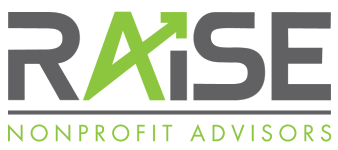The dog days of summer — a time for much-needed rest and relaxation after an intensive campaign year. Also a time when your nonprofit team of professionals and lay leaders may seem like they’re in a revolving door, with rotating vacation schedules and little continuity of workflow.
How do we best utilize the rest of the summer to advance our development work and, more importantly, how do we create a sense of productivity and accountability that permeates our organizational cultures throughout the year?
Take Advantage of the Summer
Before September rolls around and we are all caught in the flurry of back-to-real-life activities, here are some tips to make the most of summer work-time.
Keep Running Notes
When your team is in and out of the office, keep notes to maintain project continuity and for team members to quickly get up to speed when they return.
Take It Outside
Find a change of scenery and utilize the quieter pace of summer to plan for the coming year. Debrief on the past year’s performance and set goals for the coming year.
Catch Up
Sometimes it seems like the items on our to-do lists are permanent fixtures. Entering data into your CRM, reaching out to prospects you never seem to get to during the year or watching that webinar about donor retention — you will feel so empowered when you check these items off your list. Schedule an hour or two each week to begin chipping away at stubborn to-do items.
Onboard Lay Leadership
Take the time to get to know new lay leadership, set expectations with them and join them on meetings with more senior lay leadership, as well as cultivation meetings with new prospects.
Develop Efficient, Productive Teams Year-Round
My team of consultants encounter nonprofits at all levels of productivity and have found that these practices are prevalent among the most high-functioning organizations.
Make Expectations Clear
Don’t beat around the bush when it comes to conveying expectations for staff or lay leadership. At the outset of an ad-hoc project or ongoing work, make sure that expectations are clear. If someone is unable or unwilling to meet those expectations, perhaps there is a less intensive role that would be a better fit. Or, maybe it is time to cycle off.
Model Behavior
Actions speak louder than words. Follow through. For example, if a committee chair says they will email solicitor assignments that week and they delay the job themselves, it sends a message to the solicitors that their timeliness is not really important.
Communicate
I once heard communication in a relationship described as oxygen to life. It is a prerequisite to survival. Internal communication is needed to avoid confusion, achieve clarity and even improve the outcome of work. With donors, communication is the foundation of cultivation and stewardship. Maintaining regular communication with both audiences is key to performance.
Measure Against Benchmarks
Start with the question “What would success look like?” and break that down into measurable and realistic benchmarks. Set specific times to review and measure progress against goals.
Correct Course When Needed
When your team’s actual progress does not align with the goals you set, consider what needs to change for you to get there — does the whole strategy need to be rethought? Is there a particular component of the work process that needs adjustment? Don’t be afraid to depart from your original strategies and tactics.
Changing behavior patterns is difficult, both personally and organizationally. Reviewing this list of practices with your team and resolving — and making a plan — to strengthen just one practice will lead to stronger performance as your team kicks off fiscal year 2023.




